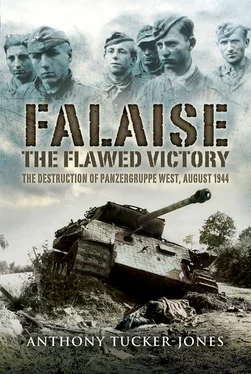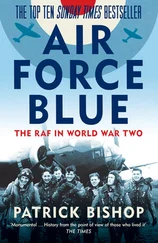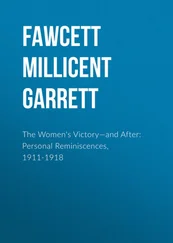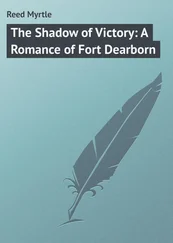Rommel pitched up at I SS Panzer Corps on 10 June to inform them that XLVII Panzer Corps with two panzer divisions would be committed to their left and that Panzergruppe West would assume control between the Orne and the Vire rivers. Then in the afternoon he visited Schweppenburg’s command post. Allied intelligence knew that this HQ had moved northwest of Thury-Harcourt to the Chateau at La Caine about 12 miles (20km) southwest of Caen on the 8th. Rommel narrowly missed the Allied air attack, which Schweppenburg recalls:
About a half hour later the command post of Panzergruppe West was subjected for several hours to severe bombing and strafing. All personnel of the operations section as well as most of the Officers of the forward echelon were killed. The bulk of the vehicles and almost all the technical equipment of the signal battalion were destroyed, in spite of their thorough dispersion. Thus the staff could no longer function. Although I myself was slightly wounded, I was ordered to assemble and re-form the staff. Since this mission entailed working in Paris, I drove to Rommel and requested a new assignment at the front.
The irony was that Luftwaffe representatives had attended the meeting and not only could they not promise support for the proposed panzer attack toward Creully, they could not even protect Schweppenburg’s HQ from air attack. About forty Officers and men were killed in the raid, including General major Ritter von Dawans, Schweppenburg’s Chief of Staff. The I SS Panzer Corps was placed under the direct control of Dollmann’s 7th Army.
With Schweppenburg wounded and Panzergruppe West’s communications severed, the survivors were withdrawn to act as a provisional HQ and at the end of June took over the front from the River Orne to Vire. General Heinrich Eberbach claimed that there was no friction between Panzergruppe West and 7th Army, but this is difficult to believe when both formations were competing for control of the same resources.
It had not taken long for Schweppenburg to realise just how vulnerable the German Army was to Allied combined armed forces; naval gunfire, artillery and aircraft were causing excessive casualties and were a drain on morale. In particular, the panzer divisions were threatened with rapid attrition, especially as replacement units were insufficient. Schweppenburg knew that a readjustment of tactics was needed:
Our intention was to concentrate the Panzer force beyond the range of naval guns, to disregard any temporary loss of ground, and to hit the enemy with the strongest possible concentration of tanks. These attacks were to be repeated after every gain in elbow-room produced by strategic mobility of the Panzer forces.
Such tactics were to prove highly difficult to implement in the weeks that followed.
Chapter 2
The Road to Falaise – Goodwood, Cobra and Mortain
Like a punch-drunk boxer the Germans for the next two months would successfully block the blows of the Allies without being able to hit back effectively. British and Canadian efforts to barge past Caen would come to nought in the face of the massed panzers, but when the Americans attacked in the west after securing Cherbourg, a weak panzer counterattack simply hastened the unravelling of the Germans’ weakening defences .
At the Wolf’s Lair, Rastenburg, East Prussia, Adolf Hitler was convinced that Normandy was not the main invasion. He was aided in this delusion by the Allies’ major deception plans, the bombing of Calais and the ongoing disruption of the northern French rail system. The bogus activities of Lieutenant General George S Patton’s fictitious forces convinced the Germans that he was going to land north of the Seine and as a result numerous German divisions, especially armoured, remained beyond the river for up to a week after D-Day. The Germans were only to have eight panzer divisions engaged during the first six weeks of the battle, whereas the Allies were expecting at least twice as many.
Following the D-Day landings both the Allies and the Germans knew the strategic ground lay in the east, where the British 2nd Army was fighting around the city of Caen. Just to the southeast lay the open tank country that could facilitate an Allied break-out. Rommel and Schweppenburg appreciated only too well that the strategic ground lay in the Caen–Falaise area.
The geography on the left wing of Panzergruppe West consisted of the restrictive Normandy hedgerow terrain known as the bocage . East of the Orne in the Caen–Falaise sector it was largely open and therefore more suited to fluid tank operations. Rommel understood the Allies had to be stopped from reaching this ground at all costs. A series of prominent geographical features south of Caen provided the Germans with an ideal stop line, here the panzers could make a stand.
While the German Navy was in no position to contest control of the English Channel and the Luftwaffe was distracted by the Eastern Front and defence of the Reich, Hitler’s panzer forces constituted a very real threat to the mainly-inexperienced American Army and the weary British Army once they were ashore. The smug benefit of hindsight has made the Battle for Normandy appear ultimately a one-sided affair – with the Allies numerical dominance of land, air and sea, how could they possibly lose?
In 1944 no one really knew how things would play out, or indeed could anticipate the unforeseen consequences of the Allied victory at Falaise. In the first few crucial weeks following D-Day the German generals had every reason to believe they could drive the Allies back into the sea if they acted swiftly and decisively.
The one major advantage Panzergruppe West had over the Allies was the qualitative edge of its panzers. The Germans realised they could never match the Allied numbers but they ensured that they could outshoot them. The Germans were to deploy in total ten panzer divisions and one panzergrenadier division, numbering approximately160,000 men equipped with just over 1,800 panzers, in Normandy. In addition to this there were another dozen or so General Headquarters Panzer Formations, mainly of battalion strength with about 460 panzers. This gave an accumulated strength for 7th Army, Panzergruppe West and the various Panzer Corps commands of around 2,260 tanks.
The Americans, British, French, Canadians and Poles were to commit thirteen armoured divisions and numerous independent armoured brigades to the battle. Their accumulated total for the campaign amounted to almost 8,700 tanks. On D-Day alone nearly 1,500 Allied tanks were put ashore. By the time of Operation Goodwood on 18 July, Allied tank strength stood at almost 5,900 and continued to rise, reaching almost 6,760 a week later when Operation Cobra was launched. By the time the Germans commenced their Avranches/Mortain counterattack against the Americans in early August, the American Army could muster almost 4,000 tanks.
On the whole the German armour deployed in Northern France was vastly superior to that of the Allies and easily outgunned their tanks. While the Allies sought to counter the German technological lead on land, sea and air at every single stage of the war, their failure to develop a war-winning battle tank was a glaring omission that even the British Prime Minister, Winston Churchill, sought to hide from the general public lest it affect morale.
The most common type of panzer in Normandy, totalling 748 tanks, was the PzKpfw IV Ausf H and Ausf J, which went into production in 1943 and 1944 respectively. With frontal armour of 80mm and a 7.5cm KwK 40 L/48 anti-tank gun, this provided the backbone of the German panzer divisions. Its gun had a twenty per cent greater muzzle velocity than that of the American-built M4 Sherman’s 75mm gun, meaning it could punch through 92mm of armour at 500 yards, while the Sherman could only manage 68mm. Normally the Panzer IV was allocated to the 2nd battalion or II Abteilung of a panzer regiment, although there were a number of exceptions. The I Abteilung of the 9th Panzer Division’s Panzer Regiment 33 was equipped with Panzer IVs and both abteilungen of 21st Panzer’s Panzer Regiment 22 were equipped with it.
Читать дальше












